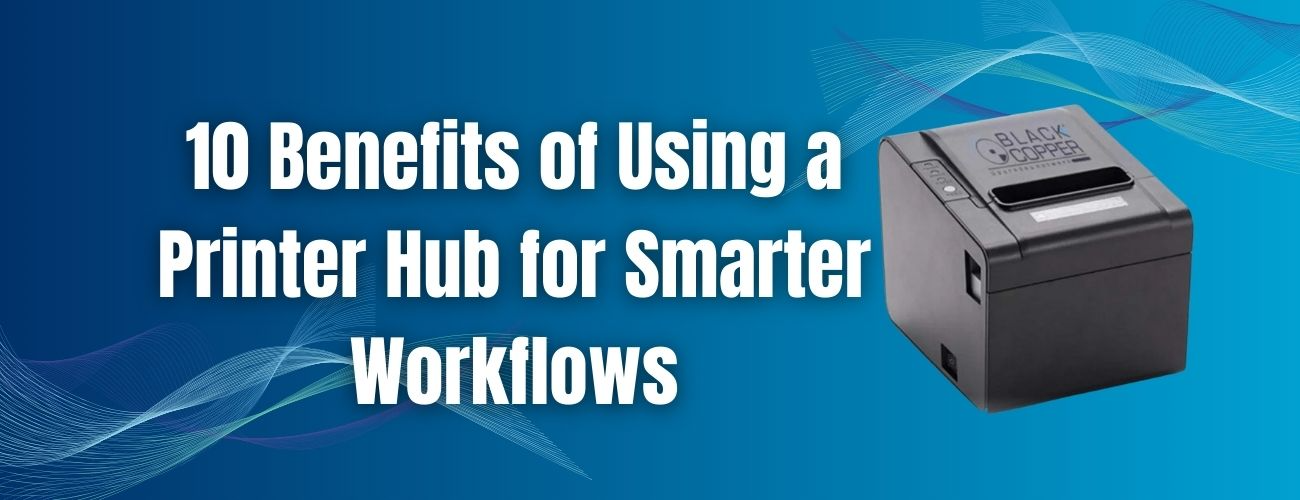Printer Hub: The Central Solution for Modern Printing Needs
The advances in printing, especially in the last decade, have moved beyond the realm of normal printing desktop equipment. Whether in offices, schools, or home setups, printers are indispensable for converting digital output into physical runs.
Managing the printers, scanners, and copiers in an organization has proven disastrous. Hence, a Printer Hub here is the ultimate game-changer. Acting as the central bridge between multiple devices, users, and networks, a Printer Hub ensures seamless connectivity, smarter workflows, and greater cost efficiency.
What is a Printer Hub?
More than just a network switch or router, a Printer Hub forms part of the centralized control system that connects different printers with computers and mobile devices into a streamlined ecosystem. A modern hub allows printing, scanning, and file sharing via a networking facility instead of direct wired connections.
Another merit a business or organization can enjoy with this printer hub is managing every printing device from one single point; thus, it minimizes downtime in automation and maximizes productivity. For home users, it is a relaxed method to share one printer among family members from laptops, smartphones, and tablets.
Why Do You Need a Printer Hub?
A fast, flexible, and secure printer is an asset in high demand these days, and, therefore, the reasons stated below are why a printer hub becomes an object of interest for buyers out there:
- Centralized Management: This simplified the lives of IT teams, as they can monitor print jobs, limit usage rights, and analyze reports, all via a single dashboard.
- Cost Control: Businesses save tremendously on paper and ink by eliminating unnecessary printing and regulating usage.
- Flexibility: Connects disparate brands and types of printers in one ecosystem.
- Remote Printing: Work-at-home employees can securely send a print job to the office hub.
- Security: Hubs incorporate authentication, thereby allowing only authorized users access to printers.
Types of Printer Hubs
There are several device options to choose from, and depending on your needs, you can pick one that suits you the best:
- Wired Printer Hub: Works with Ethernet for speed and stability. Great for big offices where printing is important and needs to be uninterrupted.
- Wireless Printer Hub: Supports Wi-Fi and Bluetooth, making it suitable for home offices and small businesses.
- Cloud-Enabled Printer Hub: Works with cloud services such as Google Drive, Dropbox, and OneDrive, allowing documents to be accessed remotely.
- Hybrid Printer Hub: Works with both wired and wireless technologies and enables a device to function with both services.
Features That Define a Great Printer Hubs
Below is a checklist of features you want to look for when choosing a printer hub:
- Compatibility: Must support a wide range of printer brands and models.
- User Management: Must allow role assignment, usage tracking, and access limitation.
- High-Speed Connectivity: Must support data transfers with minimal delays.
- Scalability: Must allow the addition of devices without a drop in performance.
- Security Protocols: Must support encryption, PIN-based access, and user authentication.
How Printer Hubs Improve Workflow
Picture an office bustling with 50 staff and 10 different printers. A hubless setup would surely lead to a lot of wasted time hunting for the correct printer, stamping feet in printer queues, and dealing with never-ending printer tantrums. A Printer ensures centralization of all devices, queuing of tasks for maximum efficiency, and allows admins to bump urgent print jobs to the top.
Hubs bolster collaboration for creative teams. Marketing, editorial, and graphic departments can send their high-resolution jobs alongside one another without targeting or bottlenecking a single printer. For schools, students and teachers can use and share printers spread across different classrooms.
Printer Hub for Home Offices
With the increase in remote work, even home offices require the use of Printer Hubs. Wireless hubs grant access to family members’ laptops, tablets, and smartphones to a single printer, thus doing away with the need to change cables.
Parents may print their work files and children their school documents, with no interruptions. Cloud connectivity allows one to print from emails and applications without the need to send files, versus having to move files.
Printer Hub for Businesses
Companies receive volumes of business documents in the form of contracts to invoices daily. Printer Hubs have made this kind of workload automated and manageable. They are:
- Keep track of the number of pages their employees printed.
- Require the employee to print an envelope front double-sided when printing on paper.
- Integrate with document management systems.
- Allow mobile printing for traveling employees.
- But really, a prominent company becomes scalable by hubs that support hundreds of different departments and users.
Security Advantages of Printer Hubs
Cybersecurity threats go beyond computers. Underlying printers are often ignored entry points for hackers. A Printer Hub adds a layer of protection using encryption, password-protected printing, and secure job release. So sensitive data, such as financial reports or client contracts, is protected from being accessed by people who do not have authorization.
Eco-Friendly Printing via Printer Hubs
Sustainability tops the priority list of most organizations. Thus, with the sophisticated tracking of printer Hubs, the following will promote eco-friendly practices:
- Block color printing to particular roles.
- Advocate double-sided printing.
- Review energy and paper savings.
- In short, this saves money; it protects the environment.
Choosing the Right Printer Hub
When buying a Printer Hub, consider these factors:
- Number of Users – Match the hub’s capacity with your team size.
- Printer Compatibility – Ensure it supports your current devices.
- Budget – Factor in both upfront cost and long-term savings.
- Technical Support – Opt for brands that offer reliable customer service.
Setting Up a Printer Hub
Installing a Printer Hub is generally straightforward:
- Connect the hub to your network via Ethernet or Wi-Fi.
- Install the management software or use the web interface.
- Add printers to the hub.
- Configure user accounts and permissions.
- Test print jobs from different devices.
Within minutes, your printing system becomes more organized, efficient, and secure.
Future of Printer Hubs
As printing technology evolves, so will Printer Hubs. We can expect AI-driven hubs that predict supply needs, suggest eco-friendly options, and offer predictive maintenance.
Integration with smart assistants like Alexa or Google Assistant will also make printing more seamless. Cloud-first hubs will dominate, enabling organizations to print securely from anywhere in the world.
Conclusion
The Printer Hub has become an indispensable tool for modern offices, schools, and homes. Centralizing printer management it boosts productivity, reduces costs, and ensures better security. Whether you’re a small business owner, a remote worker, or part of a large corporation, investing in a Printer Hub is a step toward smarter, more efficient printing.
FAQs
1. What is the main purpose of a Printer Hub?
A Printer Hub centralizes printing management, allowing multiple devices to connect, improving efficiency, and ensuring secure print jobs.
2. Can I use a Printer Hub at home?
Home users benefit from wireless hubs that let multiple devices share a single printer easily.
3. Do Printer Hubs work with all printer brands?
Most modern hubs support a wide range of printer models, but it’s best to check compatibility before purchasing.
4. Is a Printer Hub secure for sensitive documents?
Advanced hubs use encryption, password protection, and authentication to safeguard confidential files.






